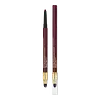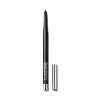What's inside
What's inside
 Key Ingredients
Key Ingredients

 Concerns
Concerns

 Ingredients Side-by-side
Ingredients Side-by-side

CI 77499
Cosmetic ColorantTrimethylsiloxysilicate
EmollientSynthetic Wax
AbrasiveHydrogenated Polyisobutene
EmollientHydrogenated Poly(C6-14 Olefin)
EmollientCI 77499, Trimethylsiloxysilicate, Synthetic Wax, Hydrogenated Polyisobutene, Hydrogenated Poly(C6-14 Olefin), Hydrogenated Polydecene, Mica, Silica Silylate, Polybutene, CI 77266, CI 77510, Copernicia Cerifera Cera, Ethylene/Propylene Copolymer, Pentaerythrityl Tetra-Di-T-Butyl Hydroxyhydrocinnamate
Isododecane
EmollientPolymethylsilsesquioxane
Candelilla Wax Hydrocarbons
Synthetic Wax
AbrasiveTrimethylsiloxysilicate
EmollientCopernicia Cerifera Wax Extract
Hydrogenated Polydicyclopentadiene
Dipentaerythrityl Pentaisononanoate
EmollientTrihydroxystearin
Skin ConditioningSynthetic Beeswax
Emulsion StabilisingDisteardimonium Hectorite
StabilisingPropylene Carbonate
SolventCopernicia Cerifera Wax
Silica
AbrasiveSynthetic Fluorphlogopite
Tin Oxide
AbrasiveAlumina
AbrasiveBenzyl Alcohol
PerfumingPentaerythrityl Tetra-Di-T-Butyl Hydroxyhydrocinnamate
AntioxidantCI 77499
Cosmetic ColorantMica
Cosmetic ColorantCI 77510
Cosmetic ColorantCI 77266
Cosmetic ColorantCI 77891
Cosmetic ColorantIsododecane, Polymethylsilsesquioxane, Candelilla Wax Hydrocarbons, Synthetic Wax, Trimethylsiloxysilicate, Copernicia Cerifera Wax Extract, Hydrogenated Polydicyclopentadiene, Dipentaerythrityl Pentaisononanoate, Trihydroxystearin, Synthetic Beeswax, Disteardimonium Hectorite, Propylene Carbonate, Copernicia Cerifera Wax, Silica, Synthetic Fluorphlogopite, Tin Oxide, Alumina, Benzyl Alcohol, Pentaerythrityl Tetra-Di-T-Butyl Hydroxyhydrocinnamate, CI 77499, Mica, CI 77510, CI 77266, CI 77891
Ingredients Explained
These ingredients are found in both products.
Ingredients higher up in an ingredient list are typically present in a larger amount.
Ci 77499 is also hydrated iron III oxide. It is created from mixing red and black iron oxides. This helps give shades of darkness to a product.
Iron III oxides are classified as inorganic chemicals for coloring.
This ingredient is used to impart a blue color. It is not water-soluble.
It goes by two different names:
1. Ferric Ferrocyanide: a synthetic dark blue pigment
2. Ferric Ammonium Ferrocyanide: a synthetic blue pigment, also called Prussian blue
In the EU, both of these colors must be labeled as 'CI 77510'.
Learn more about CI 77510Mica is a naturally occurring mineral used to add shimmer and color in cosmetics. It can also help improve the texture of a product or give it an opaque, white/silver color.
Serecite is the name for very fine but ragged grains of mica.
This ingredient is often coated with metal oxides like titanium dioxide. Trace amounts of heavy metals may be found in mica, but these metals are not harmful in our personal products.
Mica has been used since prehistoric times throughout the world. Ancient Egyptian, Indian, Greek, Roman, Aztec, and Chinese civilizations have used mica.
Learn more about MicaPentaerythrityl Tetra-Di-T-Butyl Hydroxyhydrocinnamate (long name, huh?) is a synthetic antioxidant.
It is used to help stabilize other antioxidants or prevent the color from changing in a product.
As an antioxidant, it helps fight free-radical molecules. Free-radical molecules are capable of damaging our cells and other genetic material. Thus, antioxidants may reduce the signs of aging.
This ingredient is oil-soluble.
Learn more about Pentaerythrityl Tetra-Di-T-Butyl HydroxyhydrocinnamateSynthetic Wax is created from fossil fuels such as natural gas. It is used to enhance texture, adjust pH, and as an occlusive.
It may also be used as an abrasive ingredient to exfoliate the skin.
Synthetic Wax may not be fungal acne safe.
Learn more about Synthetic WaxThis silicone is an emollient. Emollients create a thin film on the skin to prevent moisture from escaping.
It is not soluble in water and helps increase water-resistance in products.
According to a manufacturer, it can blend seamlessly with silicone oils, such as Cyclopentasiloxane.
Learn more about TrimethylsiloxysilicateCI 77266 is a high-purity pigment used to create an intense black color in cosmetics. It is made up of fine particles of pure carbon. This ingredient is also often listed as Carbon Black in ingredient lists.
You'll likely find this ingredient in mascaras, eyeliners, brow products, and eye shadow.
In the US, this ingredient can only be used if it meets strict FDA specifications. Certain versions even require batch-by-batch certification after extensive safety evaluation.
In the European Union, this ingredient is permitted as a colorant and classified as a "nanomaterial" based on its particle size (meaning it requires deeper assessment).
The EU Scientific Committee on Consumer Safety (SCCS) has reviewed nano-sized carbon black specifically and concluded that it does not pose a risk to human health when used in cosmetic products applied to healthy, intact skin and formulated to avoid inhalation.
Studies support this regulatory stance. Laboratory studies on nano-carbon black show potential for cytotoxicity and inflammatory effects in immune cells; it is important to highlight these findings are based on in vitro (not done on a living organism) testing or inhalation scenarios rather than normal topical cosmetic use.
Occupational studies involving industrial workers exposed to airborne carbon black have not shown a clear link between cumulative exposure and cancer risk. These findings are not directly applicable to cosmetics; cosmetic formulations bind pigments within creams, gels, and liquids that are not inhaled.
Overall, evidence shows that this ingredient is safe under regulatory guidelines and purity standards, especially when formulated to avoid airborne exposure.
Even with regulatory approval and a long history of use, some consumers might prefer to avoid ingredients that are petroleum-derived or that fall under the “nanomaterial” category.
Choosing whether to use CI 77266 isn’t necessarily about safety alone; it can also be about personal philosophy, comfort level with synthetic versus natural ingredients, and how much weight you place on ongoing research and regulatory oversight.
Makeup is highly individual, and personal preference plays an important role in deciding what feels right for you.
Learn more about CI 77266